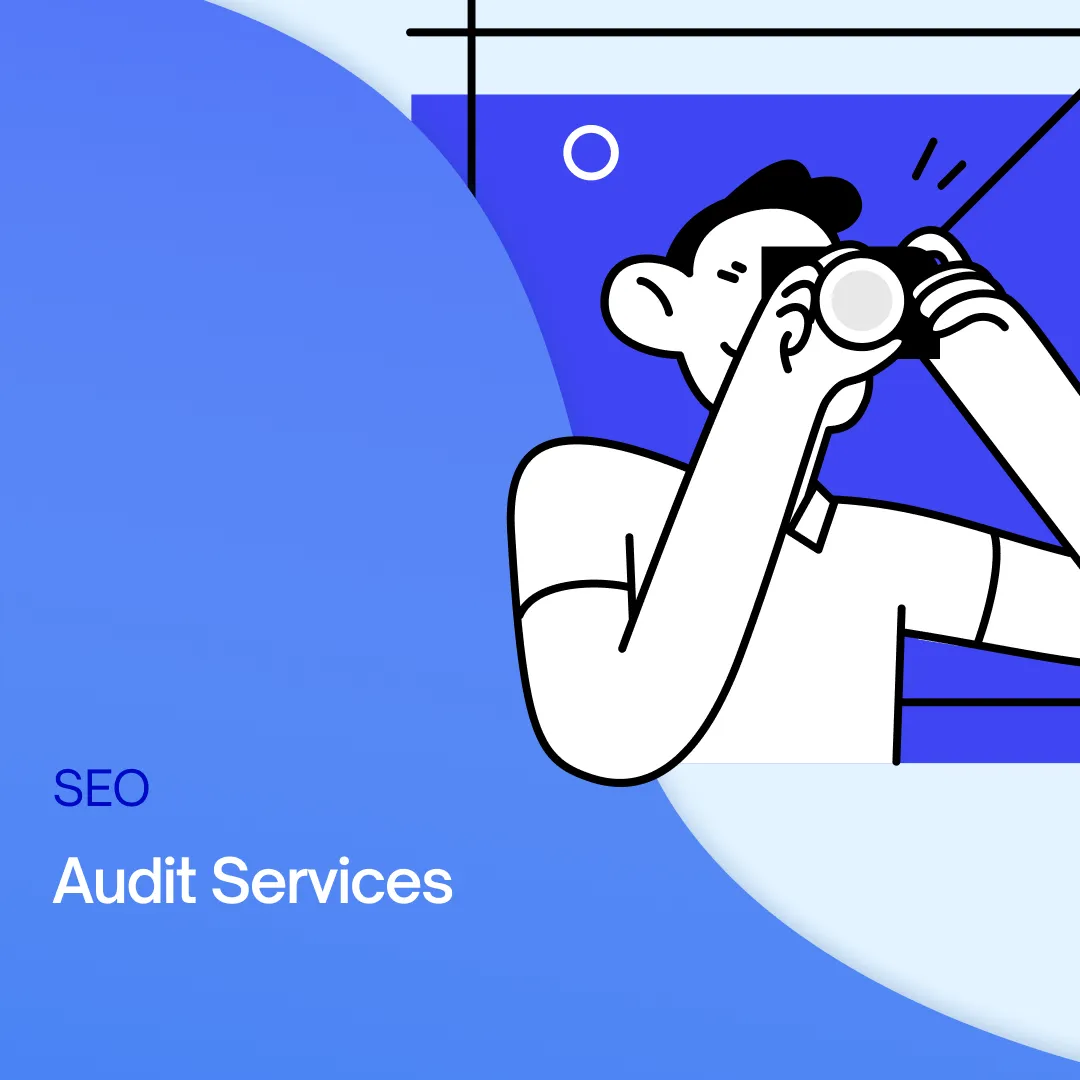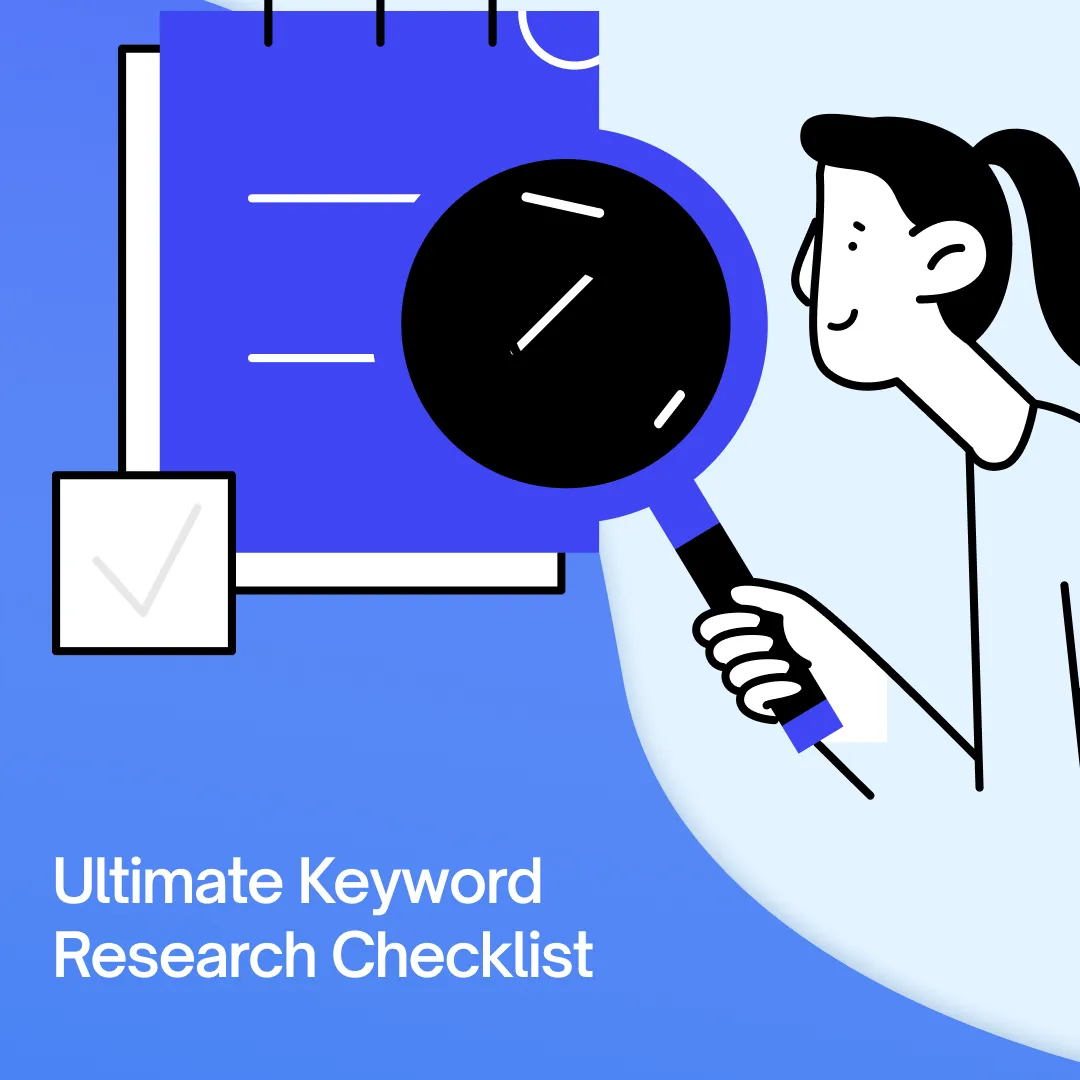It can be demoralizing to look at your website’s visits and see a low number of visitors.
It’s even more demoralizing when you realize most of those people are your team and possibly your parents.
This feeling can make you cling quite desperately to popular SEO tactics that everyone raves about.
Link-building is one of those tactics.
And it truly works – but only if you do it correctly.
White-hat methods define the correct road.
This technique is based on two pillars that support each other: your marketing goals and your audience’s needs.
This guide will teach you actionable steps to implement your white-hat link building strategy today.
We’ll also discuss the differences between white, black, and grey-hat link building, offering lots of examples you can copy.
Keep reading below.
TL;DR: White Hat Link Building
- Link-building boosts website visits if done correctly.
- White-hat methods prioritize marketing goals and audience needs.
- White, black, and grey-hat link-building methods differ in their approach and ethics.
White Hat Link Building Basics:
- Originated from classic movies where good characters wore white hats.
- White-hat in SEO means adhering to Google's guidelines, reducing the risk of penalties.
Comparing the Hats:
- White-hat focuses on user experience, valuable content, and ethical tools.
- Black-hat aims to trick users with methods like keyword stuffing and link farms.
- Grey-hat is in between, not directly violating Google's guidelines but still risky.
Importance of White Hat Link Building:
- Ensures your site isn't downgraded by search engines.
- Increases visibility, organic reach, authority, and ROI.
10 White Hat Techniques:
- Guest Posting: Provides long-term credibility through high-quality content.
- Content Promotion: Offers short-term exposure by promoting unique content.
- Broken Link Reclamation: Replaces broken links with your content for easy exposure.
- Link Partnerships: Builds long-term relationships using Google Search Console.
- Use HARO: Diversify backlinks by helping reporters with their queries.
- Write Testimonials: Gain exposure by writing reviews on partner web pages.
- Participate in Podcasts/Conferences: Boost short-term authority through public speaking opportunities.
- High-Volume Cold Outreach: Consistently diversify your link profile.
- Create Linkable Assets: Give your potential customers useful resources.
- Publish Original Research: Attract editorial links from high-DR domains.
Concluding Tips:
- Begin with audience needs and marketing goals.
- Techniques vary in their focus: long-term, short-term, authority, exposure, or traffic.
- For personalized guidance, consider a free strategy meeting with a B2B link building agency.
What Is White Hat Link Building?
White-hat is a widespread idiom that gained life in the 1950s.
Fun fact: The Oxford Dictionary claims the term originated in classical western movies, where the good characters wore white hats. Obviously, the villainy types wore black hats.
Now back to search engine optimization.
In the world of SEO, this term defines all practices that are above board.
Generally speaking, that means those practices that follow Google’s guidelines. If you do white hat link building, the chances of getting penalized by Google are slim to none.
White Hat vs. Black Hat vs. Grey Hat*
*Yes, there are gray hats too! Joyous realization aside, let’s see the differences between these link-building tactics.
White hat strategies respect the ethical way of SEO link building, following Google’s guidelines.
The links you build using these techniques:
- Focus on user experience
- Add value through relevant, high-quality content
- Include authoritative inbound links
- Don’t manipulate search engine algorithms with spammy links
- Entail partnering with authoritative websites that also follow Google’s guidelines
- Use ethical link-building tools
Black hat link building is its polar opposite ethical-wise:
- Black-hat link-building methods include keyword stuffing, taking part in link farms, and getting tons of low-quality links from irrelevant websites.
- The aim is to get more organic traffic artificially by tricking users.
Grey-hat link-building is in the proverbial purgatory:
- Its link schemes may be questionable, but they don’t challenge Google guidelines directly. Still, they are risky if overused.
- Techniques include spinning content, keyword stuffing, and using Private Blog Networks (PBN) for publishing blog posts and getting backlinks.
Why Should You Do ONLY White Hat Link Building?
You should only do white hat link building because you want to be the good character and want Google to recognize you as such.
That way, search engines won’t downgrade your website into oblivion.
That’s what the second page of search results on Google is called.
Or even worse, you could get a manual penalty from Google, removing all of your pages from all search results, making your organic traffic tank to zero.
In turn, link-building services that provide white-hat inbound links:
- Increase search engine rankings, thus boosting your visibility.
- This visibility boosts organic reach because more people can see your website.
- If your content is good, people spend more time on your website. This tells search engines that your website is an authoritative source, thus increasing your Domain Authority (DA) and Domain Rating (DR).
- All these elements collaborate to increase your conversions, which translates into a better ROI.
8 White Hat Techniques That Work
Now that you know what white-hat link-building is and why it’s better than its villainous siblings, let’s see what techniques you can use to make it happen:
1. Guest Posting: Best for Long-Term Credibility
Guest blogging is one of the slowest white-hat strategies, but it’s steady, and it will get you myriad high-quality backlinks from relevant websites.
Below are some lessons we’ve learned through years of experience:
- Guest posts should be high-quality, focusing on responding to your customers’ needs.
- You should focus on evergreen, valuable content that stays relevant.
- Include relevant and authoritative inbound links connected to suitable anchor texts.
- Try to connect with websites with high domain authority (DA) and domain rating (DR) to increase exposure.
- You can use target keywords related to your subject and polish the article’s structure using the “proper” headlines. However, you should focus on creating quality content above all. These SEO strategies remain secondary to your content.
Warning: Google guidelines prohibit paying for links. Black-hat techniques aren’t just about low-quality links; they also entail paying for high-quality links.
Danny Iny, the founder of marketing company Mirasee (formerly „Firepole Marketing“), leveraged his guest posting opportunities to a T.
He started with 30 visits per day, lots of debt, and no name for himself.
Then, he wrote an excellent article that he pitched to the Copyblogger, which brought him a boost in search rankings.
That led to increased recognition and authority.
Danny rode this wave, sending multiple outreach emails to relevant blogs in his niche.
He mentioned his success with the Copyblogger, and they all agreed to let him write a guest post for them.
Remember: Guest posting is just one weapon in your long-term content marketing arsenal.
So you have to do it rigorously, constantly finding new outlets for your relevant content.
Danny himself has documented the drop in people’s attention after writing just one post:

But here’s how people’s attention increases in an upwards spiral if you post constantly and include relevant links:

2. Content Promotion: Best for Massive Short-Term Exposure
Content promotion is one of the white-hat SEO techniques that gets you quick exposure.
The idea is getting very many links to your website fast to boost referral traffic.
The result is all eyes will be on your brand.
Here’s how you do it:
- Think of something extraordinary (no pressure): But you need an excellent tool, guide, or case study that everyone will want to get their hands on. This is called a linkable asset.
- Reach out to prominent sources in your industry: Think news outlets, online magazines, and relevant websites.
- Ask for coverage: Highlight why this new tool or amazing content you’ve developed is worth the exposure and the attention you want it to get.
We did a version of this technique for our sibling company, the influencer platform inBeat. inBeat started expanding its free toolkit with valuable software for companies that want to use influencer marketing:
- Free mockup ad generators
- Engagement rate calculators
- Fake follower checkers
- Influencer discovery platform and tools
- Spend calculators
- And more

We then interlinked to these tools with white-hat SEO links from reputable sources. Along with guest posting, HARO, and relationship link-building, this technique increased unique visitors for inBeat from 500 to 300k+ per month.
Pro tip: You can also build internal links pointing to these tools in articles you produce for your own website.
3. Broken Link Reclamation: Best for Some Effortless Exposure
Broken link building entails finding broken outbound links in high-authority websites where you want to be featured.
- You can use a tool such as Ahrefs to discover these broken links.
- Then, email the website owner/content manager to let them know some of their sources are no longer working.
- And suggest one of your pages as a relevant replacement.
Let’s say you want to aim high and post in Stacked Marketer. Ahrefs shows you 60 broken links in seconds:

Building links with this tactic is:
- Easier than creating something extraordinary and then getting white-hat SEO links from high-authority sources.
- Faster than building long-term credibility through guest posting.
However, it’s also less certain.
The website’s owner may take a long time to respond or may not agree to replace those broken links with yours at all.
So, don’t use this technique as a stand-alone.
4. Link Partnerships: Best for Long-Term Relationships
Networking has always been a successful way to get ahead in business.
You can do the white-hat equivalent of networking using the Google Search Console.
Here’s how that works:
- Open the top linking sites report on Google Search Console.
- See what websites have already cited your articles or tools. That means they find your content/tools worth mentioning.

- Shortlist the ones with the highest DR and DA. Again, you can use Ahrefs for that.
- Find the websites’ owners’ email addresses.
- Send them personalized messages, pointing to other valuable resources on your website.
- Be open to networking. Even if they aren’t interested in new link placement now, they might be in the future.
5. Use HARO: Best for Diversifying Your Backlink Profile
HARO stands for the website Help A Reporter Out.
This website allows journalists to ask questions and experts to respond.
If your replies are in-depth and high-quality, they can be cited by top publications like Forbes or Greatist.
Here are just a few examples:

This type of exposure leads to a steep boost in link authority. You can’t appear in a high-quality source without some of their expertise rubbing off on you.
HARO isn’t perfect, though:
- It’s a tedious process. You get hundreds of queries delivered to your inbox even if you set just a few target keywords. Thus, sifting through them takes time.
- There are no guarantees your white-hat backlinks will be live, ever. So, include other strategies alongside it in your link-building campaign.
6. Write Testimonials: Best for Product Exposure
Writing testimonials on your business partners’ web pages doesn’t just help them.
It helps you to get more exposure to your website.
Best part is: You can post promotional yet natural links to your product pages.
Here’s the thing: guest posting or relationship link-building entails respecting some rules.
One of those is that you cannot link to promotional links on your website (typically).
But when you write testimonials, you can link to your product pages or front page.
Or whatever page you want to increase exposure to according to your marketing goals.
This tactic works because 95% of people read product reviews before purchasing something.
So you can bet your clients’ prospects will do the same thing, thus discovering your products.
For example, Social Pilot has written multiple case studies about the businesses it helped.
Getting featured in one of those articles is guaranteed to bring you more visitors to your website:

7. Take Part in Podcasts or Conferences: Best for Short-Term Authority Boost
Participating in podcasts, expert roundups, and conferences boosts your authority in the short term, especially if these events are advertised properly.
Of course, the organizers should include a backlink to your website in the podcast notes.
Remember the inBeat case study we discussed above? Well, inBeat’s CEO David Morneau has also strived to increase his presence by:
- Taking part in podcasts like this one with Make Each Click Count:

- Giving interviews that help new business owners understand the importance of a business mindset, like this one for Niche Pursuits:

To increase exposure:
- Rally your marketing team to promote these events. Use your website, influencer marketing, or marketing emails.
- Make sure your audience understands why these events will benefit them first and foremost. Point to learning opportunities, actionable advice, or innovative tools they can discover in these events.
- Reach out to media outlets that are interested in the topic.
8. Leverage High-Volume Cold Outreach: Best for Steady Link Profile Diversification
Cold email outreach for backlinking is similar to cold outreach in sales.
But this time, your goal is to steadily increase your backlink profile by getting new mentions constantly.
Warning: You must message 400+ websites monthly because only a few sources will respond timely or at all.
Here’s how you do it:
- Think of a list of topics you can cover.
- Open Ahrefs Content Explorer Tool.
- Type in one of your topics in the search bar and add the right filters.
- Find the pages that deal with this topic.

- Sift through them, using metrics like reference domains and page traffic to discover high-quality websites.
- Start emailing the top contenders.
- Rinse and repeat for other topics.
- Then, repeat monthly.
9. Create Linkable Assets: Best for Attracting Organic Backlinks
Developing high-quality, valuable content—such as in-depth guides, infographics, or interactive tools—naturally attracts backlinks. These "linkable assets" serve as authoritative resources that others want to reference.
Example: Brian Dean of Backlinko created a comprehensive guide on Google's ranking factors, which became a significant linkable asset, attracting over 17,000 backlinks from 6,200+ different domains.

10. Publish Original Research and Statistics: Best for Earning High-Authority Links
Conducting original research or publishing unique statistics positions your site as a primary source of information, encouraging others to cite and link to your findings.
Besides, a study revealed that 74% of readers find content containing data more trustworthy than content without data. That’s one reason why content with statistics earns more backlinks.
More importantly, when you’re writing statistics and original research – you’re actively targeting content creators in your niche, not your potential customers.
The advantage is that these content creators have your customers’ trust. So when they publish your content, you get more high-quality leads.
Besides, their websites typically have higher DR. As such, Google deems the SEO juice floating from them as more valuable.
We also applied this method for our clients.
This piece on UGC statistics, for example, is getting more and more traction:

Start Your White-Hat Link-Building Strategy
After reading all this, you have all the tools and insights to start your link-building strategy.
And be totally in control of it while also respecting Google’s guidelines.
Remember to start from your audience’s needs when writing content, developing new tools, or finding websites that can give you mentions.
Focus on your marketing goals too.
Some of the link-building techniques above focus on the long term, while others on the short term.
Some help you build authority, others are best for exposure, and others increase organic traffic to your product pages.
If you’re unsure where to start, schedule a FREE strategy meeting, and we’ll help you tailor a plan based on your specific situation.




